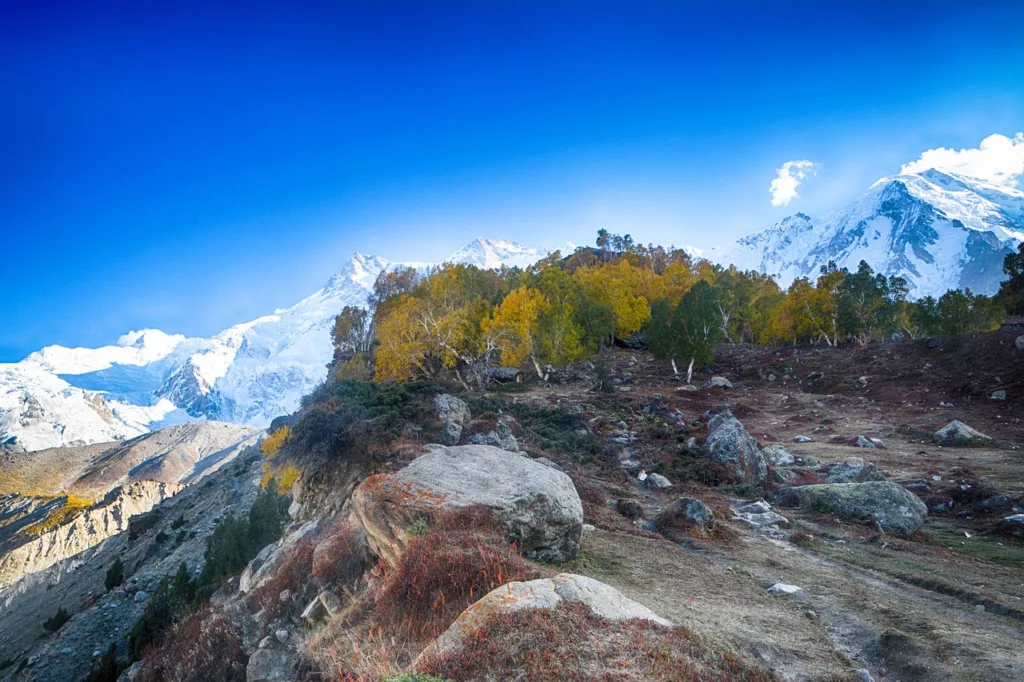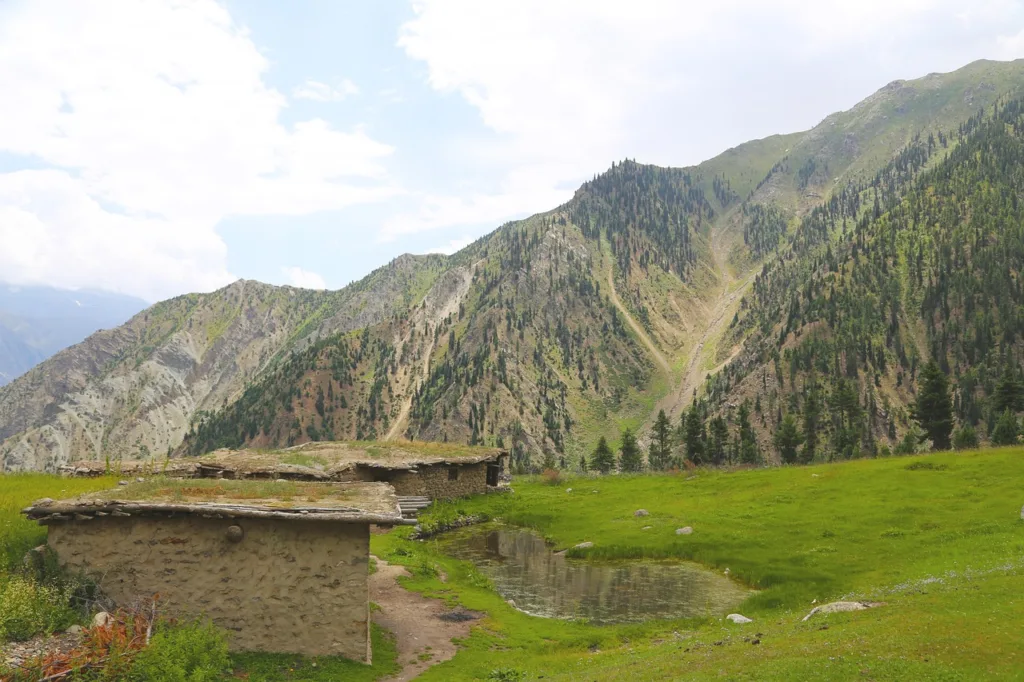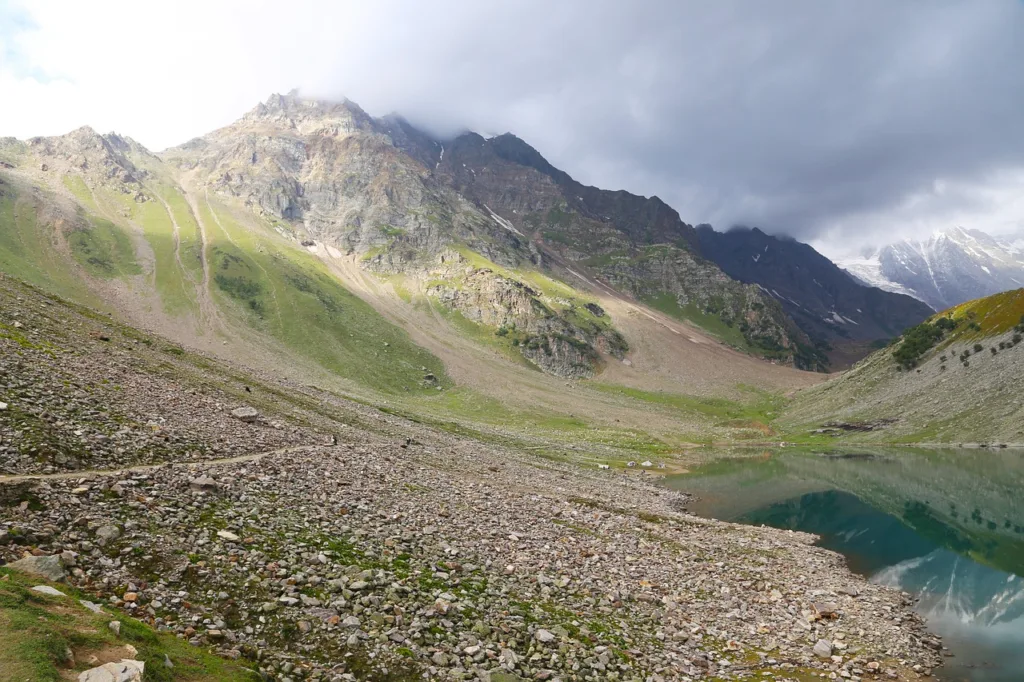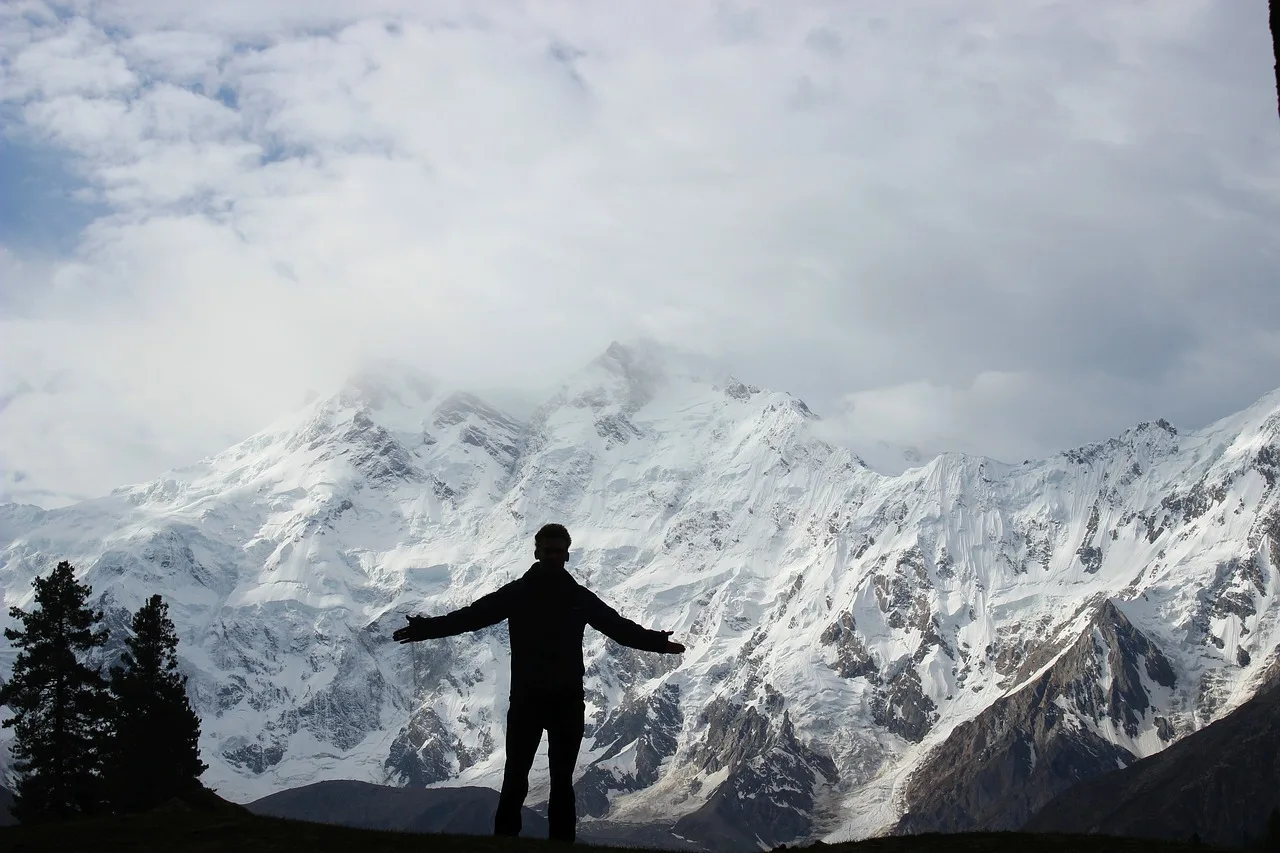Fairy Meadows and Nanga Parbat Base Camp Trek: Your Essential Guide
Prepare to immerse yourself in the allure of Fairy Meadows and embark on an unforgettable journey to the legendary Nanga Parbat Base Camp. Nestled in Pakistan, Fairy Meadows acts as a gateway to the majestic Nanga Parbat, enticing adventurers seeking a blend of tranquility and heart-thumping escapades.
However, the spellbinding vistas of Nanga Parbat, nestled amidst serene emerald meadows, come with the price of a challenging expedition. Accessing Fairy Meadows demands physical resilience due to its rugged, vehicle-unfriendly roads, and the high altitude that ushers in frigid temperatures and thin air. These hurdles pose a greater challenge, particularly for novice trekkers.
Venturing into Fairy Meadows guarantees an unparalleled adventure, but adequate preparation is key. Here’s your comprehensive guide, furnishing you with everything you need to know before embarking on the mesmerizing journey to Fairy Meadows and the Nanga Parbat basecamp!
Unraveling the Tales: Fairy Meadows’ Intriguing History
In 1868, a local named Khus Malik Raees from Ghorabad stumbled upon the lush expanse of mountain meadows at an altitude of about 3,300 meters while on an ibex-hunting expedition. Recognizing the land’s potential for his animals, he purchased the entire area from two shepherds for a mere 14 rupees and a 12-gauge gun. This marked the genesis of a community as more relatives were invited to settle there, each acquiring partial ownership of the region.
The early 1900s witnessed the region catching the eye of German mountaineers aiming to conquer Nanga Parbat. Captivated by the breathtaking beauty of the meadows, they dubbed the place Märchenwiesen, translating to ‘Fairytale Meadows’. Over time, this name transformed into the more melodious ‘Fairy Meadows’ in English.
Despite Fairy Meadows gaining traction among mountaineers, it wasn’t until 1991 that Mr. Ghulam Nabi pioneered the area’s first hotel, Raikot Sarai. Initially, there was local resistance against the sudden influx of tourism. Yet, nearly three decades later, the perseverance has paid off, making Fairy Meadows one of Pakistan’s most sought-after tourist spots.
Nanga Parbat: The Legend of the ‘Naked Mountain’
Standing tall at 8,126 meters, Nanga Parbat, translating to ‘naked mountain’, claims the title of the world’s 9th tallest peak. Known as the ‘Killer Mountain’, its ascent is infamous for its immense difficulty, claiming the lives of numerous mountaineers, including Italian mountaineer Guenther Messner in 1970.
The mountain saw its first expedition in 1895, followed by a landmark attempt in 1934, yet neither managed to conquer its summit. It wasn’t until 1953 when Austrian mountaineer Hermann Buhl achieved the monumental feat of solo summiting, devoid of supplemental oxygen.
Even today, conquering Nanga Parbat remains a formidable challenge reserved for only the most seasoned climbers. Those daring to undertake this ascent must secure permission by applying for a mountaineering visa, underscoring the mountain’s unparalleled difficulty and the significance of proper authorization for such a daunting endeavor.

Best Time to Explore Fairy Meadows
For the ultimate experience at Fairy Meadows and the Nanga Parbat basecamp, plan your visit between June and July. This period boasts vibrant greenery and pleasant temperatures, hovering around a comfortable 20°C. However, be prepared for occasional rainfall during these months.
If you fancy the enchantment of autumnal hues rather than lush green landscapes, the early days of October offer a captivating spectacle. But note, temperatures drop significantly during this time, dipping below freezing at night. Dressing accordingly is essential.
Winter explorations are also possible, with Fairy Meadows becoming a popular New Year’s Eve destination. Yet, two crucial considerations arise: Firstly, Babusar Pass, the southern route, is typically closed in winter. Accessing Fairy Meadows then requires flying into Gilgit. Secondly, winter weather in Fairy Meadows can be harsh, plummeting to temperatures as low as -20°C. Adequate preparation for such extreme conditions is paramount.
Navigating the Path to Fairy Meadows
Reaching Fairy Meadows isn’t a walk in the park—it’s a journey demanding effort. From Raikot Bridge, it took me roughly five to six hours to reach Fairy Meadows, though the duration varies based on individual fitness levels.
Here’s your route to Fairy Meadows: Road to Raikot Bridge: Prepare for the trek by energizing with chai in a nearby village before starting your journey to Fairy Meadows.
Raikot Bridge marks the starting point for the journey to Fairy Meadows, where you bid farewell to your car or bus and transition to a jeep.
Accessing Raikot Bridge from different parts of Pakistan is relatively straightforward. You can take the traditional route from Islamabad via Naran and Babusar Pass or opt for a flight into Gilgit and proceed southward. The Karakoram Highway links conveniently to Raikot Bridge, offering relatively good driving conditions by Gilgit-Baltistan standards.
Remember, Raikot Bridge is just the onset of your extensive expedition. Arriving in the morning or staying overnight at a nearby hotel is advisable to ensure reaching Fairy Meadows before nightfall sets in.
Jeep Ride to Tattu Village: An Adventure in Itself
Prepare for a thrilling two-hour jeep ride from Raikot Bridge to kick-start your journey towards Fairy Meadows. At Raikot Bridge, numerous drivers offer jeep rides for around 8100 Pakistani rupees (approximately $50 USD) for a round trip. While the cost might seem steep, these jeeps accommodate up to eight passengers, allowing you to split expenses among fellow travelers. If you’re solo or in a smaller group, joining forces with other travelers is a common practice (just remember, you’ll likely return with the same group).
However, the price is the least of your worries once inside the bumpy jeep, inching close to the cliff edge, questioning the fate of your next paycheck. Fear not, while the Fairy Meadows road is treacherous, incidents are rare. Your main concerns during this bone-rattling ride should revolve around safeguarding your head and limbs from bumps and reducing dust inhalation by sporting an N95 mask.
Upon concluding this nerve-wracking ride, you’ll arrive at Tattu, a quaint village serving as the starting point for the Fairy Meadows trek. Grab some snacks, savor a cup of chai, and pat yourself on the back—you’ve endured two hours in one of the most uncomfortable vehicles known to humanity. Brace yourself, though, as the toughest part is yet to unfold…

Trekking to Fairy Meadows: The Final Leg
The last stretch to Fairy Meadows must be traversed on foot since even a jeep cannot navigate this narrow path. Speaking from a beginner’s perspective, the trek wasn’t overly challenging. The terrain is relatively forgiving, and it took me approximately three hours to reach the meadows. However, your individual fitness level, your condition on the day of the trek, and the weight of your belongings (hopefully limited to a backpack) can significantly influence your experience. Additionally, if walking isn’t your forte, there are horses and donkeys available along the route for a nominal fee, offering assistance in carrying luggage or even transporting you to the top.
Accommodations at Fairy Meadows
Fairy Meadows boasts an array of hotels, thanks to its popularity among tourists. My personal recommendation is Raikot Sarai, the oldest hotel in the area. Comprising cabins situated at the trek’s end, this hotel presents an awe-inspiring view of Nanga Parbat throughout the day. With its in-house restaurant and nearby shops catering to your essentials, Raikot Sarai ensures a comfortable stay.
Keep in mind, most accommodations in the form of cabins lack adequate heat insulation. Expect chilly nights and dress warmly, snuggling under thick blankets. Hot water availability in the mountains might also be scarce, so be prepared for colder showers during your stay.
Connectivity Woes in Fairy Meadows
Prepare to bid adieu to the digital world in Fairy Meadows as internet connectivity—WiFi, mobile data, the whole shebang—is virtually nonexistent. You’ll be completely off the grid during your stay, and complaints about this are rampant. It might feel like a digital detox, but it’s best to inform your loved ones in advance about your unavailability to avoid undue worry.
Given the absence of phone signals, sticking together as a group is crucial when venturing out. Losing sight of one another might mean no means of contact for help. While the lack of connectivity enhances the immersion in nature’s serenity, it necessitates added caution and a pre-planned meeting point or strategy in case anyone gets separated.
Nevertheless, ensure your devices are charged every night. Fairy Meadows presents fantastic photography opportunities, so having a fully juiced phone, camera, and power bank ensures you capture these breathtaking moments.
The Nanga Parbat Base Camp Trek: A Challenge Beckons
For the adventure enthusiasts, the pinnacle of Fairy Meadows’ allure lies in the epic Nanga Parbat base camp trek—an expedition not for the faint-hearted. Here’s what you should consider before embarking on this thrilling journey:
About the Nanga Parbat Basecamp Trek
Commencing from your lodging in Fairy Meadows at an altitude of approximately 3,300 meters, the Nanga Parbat base camp trek culminates at the Nanga Parbat base camp, nestled at an altitude of 3,900 meters. Typically, each leg of this trek spans around six hours, although fatigue might extend this duration.
The initial phase of the trek navigates relatively easy terrain, meandering through pine forests, verdant meadows, and lively springs. However, the latter half poses a steeper challenge with rocky terrains and demanding climbs over steep rocks. Around the halfway mark lies a renowned viewpoint offering a striking perspective of Nanga Parbat, marking the transition between these contrasting trail sections.

Who Should Consider the Nanga Parbat Base Camp Trek?
Embarking on the Nanga Parbat Base Camp Trek is within reach for beginners, but my personal experience as a first-time trekker shed light on challenges. Here’s who should contemplate attempting this trek:
• Moderate Activity Level: Being somewhat active is essential. You needn’t be an athlete, but if physical exercise isn’t your norm, brace yourself for a tough trek. • Good Health on Trek Day: Avoid trekking if you feel unwell or fatigued before starting. The last thing you want is to falter in the middle of nowhere. • Preexisting Conditions: Consult a medical professional if you have heart or lung issues, as altitude can exacerbate these conditions. • Some Experience Helps: While achievable for newcomers, a bit of trekking familiarity can ease the Nanga Parbat base camp journey. • Respectful Attitude: Maintain respect for nature and local customs—keep the environment clean, refrain from disrupting nature, and seek permission before photographing locals.
Preparation Tips for the Nanga Parbat Base Camp Trek
Checked off the checklist and ready to roll? Hold on, preparation is key for a pleasant Nanga Parbat base camp trek. Consider these tips:
• Acclimate to Altitude: Spend a few days at increasing altitudes to acclimatize before the trek to adjust your body to the oxygen-deficient environment. • Local Guide Assistance: While seemingly straightforward, the trek can be deceptive. Hire a local guide for navigation and safety in the wilderness. • Essentials to Pack: Carry a refillable water bottle (with a filter), appropriate clothing, ample snacks (especially chocolate), sunscreen, and more. • Fuel Your Body: Breakfast is crucial, eat at the base camp’s restaurant, and stock up on snacks. Chocolate is a lifesaver during moments of fatigue. • Rest Well: Pre-trek and post-trek rest are vital; you’ll likely experience significant soreness the following day.
Safety at Fairy Meadows
Concerned about safety at Fairy Meadows amid thrilling adventures? Fear not; it’s a resounding YES—Fairy Meadows is safe for families, groups, and solo travelers. Locals are well-versed in hospitality, ensuring guests’ comfort and needs.
However, erring on the side of caution is wise. Consider these safety suggestions:
Health Matters: In remote locales like Fairy Meadows, prioritize health. Eat well, rest adequately, especially if unaccustomed to high altitudes. Ease into mountain travel gradually for acclimatization.
Food and Water Safety: While mountain springs usually offer safe water, avoid tap water and use bottled water or a filter. Hand hygiene before meals is crucial.
In case of mishaps, rescue centers provide basic medical aid. Yet, if feeling unwell before the trip, postponing the journey is wise. Safety first!
Exploring Further Destinations in Pakistan
If Fairy Meadows left you spellbound, don’t miss these enchanting destinations across Pakistan: Naran, Skardu, Hunza, Islamabad, Taxila, Karachi, Balochistan
Conclusion
With its boundless natural splendor and thrilling escapades, Fairy Meadows emerges as a gem in northern Pakistan. Accessing this haven demands physical endurance, but the rewards are unparalleled, offering vistas of Nanga Parbat’s grandeur and more. A trekker’s haven, Fairy Meadows serves as the gateway to the achievable Nanga Parbat base camp hike, even for novices.
However, adherence to health and safety protocols is paramount, with the cardinal rule being attuned to your body. Never compromise safety for thrill; prioritize comfort and well-being. Following these guidelines ensures a flawless Fairy Meadows experience.
Have you journeyed to Fairy Meadows? Share your experiences in the comments below! Your insights could inspire others to embark on this remarkable adventure!
